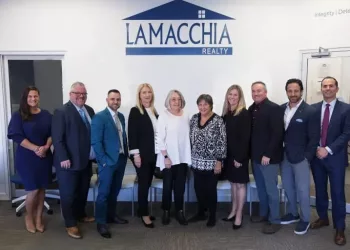Renting is at the highest level in half a century, with 43.7 million households currently living in rentals, according to a new report from RentCafe released this week.
According to the report, in a study of the 50 largest U.S. cities renters surpass homeowners in 41% of zip codes, with as many as 101 zip codes switched to renter majority in the past decade.
Key highlights:
- The top zip code where renters became the majority in the last decade is 43240 in Columbus, where about 68% of the residents are renters—a result of a whopping 157% increase in the last 10 years.
- Following in second is Chicago’s 60606, where the number of renters grew by 151% in a decade and has a renter population of 63%.
- Philadelphia leads the pack with the most neighborhoods that transitioned to renter-majority, with a total of seven zip codes, followed by Memphis and Houston, with six zip codes each.
- At a state level Texas leads with the highest number of neighborhoods that switched, 17 in total, and taking third place with zip code 78256 that recorded a 132% increase in renters in 10 years.
- The fastest-growing renter populations are located in city cores: eight of the 20 neighborhoods that grew their renter populations by more than 80% in the past decade are in or near downtowns.
- San Antonio’s 78215 is the fastest-growing zip code for renters in the nation at an increase of 238% in ten years, followed by downtown Miami’s 33132 and central Minneapolis’ 55415–which recorded increases of over 160% in the renter population.
- Five neighborhoods across the U.S. are 100% renter dominated: New York City’s 10162, Nashville’s 37228, San Francisco’s 94130, Dallas’s 75251 and Fort Worth’s 76155.
- With more than 40 zip codes where renters make up more than 50% of the population, Los Angeles and New York boast the most renter-majority zip codes.
Major takeaway:
“Soaring home prices made many people put the dream of homeownership behind them,” said Andrea Neculae, a writer at RentCafe and author of the report. “Although renting was previously considered an alternative brought on solely by circumstances, one-third of this decade’s renters now say that it’s a matter of choice. In fact, according to our previous study, a diverse set of 23 large and mid-sized cities transitioned from owner- to renter-majority between 2010 and 2020.”
Added Neculae, “With 43.7 million households now renting – the highest level in 55 years – apartment living has become popular even in neighborhoods that were once considered owner hotspots. This trend spread across the nation in the last 10 years, radically changing neighborhoods in Philadelphia, Chicago, and Houston and even in mid-sized cities such as Omaha and Tulsa.”
For the full report, click here.












